The IT landscape is changing faster than ever, and companies are always looking for new ways to improve workflows and optimize data centers. Regarding rackmount servers, the 2U server is often regarded as a flagship option for its convenience, mobility, performance, and scalability, on top of efficient resource usage. But why is the 2U server considered a revolutionary technology in the modern era? This guide explicates the architecture of 2U servers, their benefits, their role in modern data center ecosystems, and their use cases. Be it an IT expert, a system architect, or a business executive, this article will help them understand the changing dynamics of computing and 2U servers’ unprecedented infrastructure by equipping them with essential insights. Wait until we discuss the features, advantages, and considerations of this crucial equipment that defines towering technology.
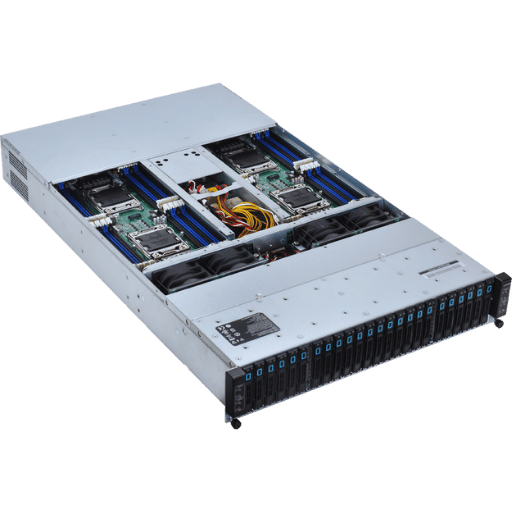
A 2U server is a rack-mounted server that takes up two rack units (U) in height (1U equals 1.75 inches). These servers offer more computing power and expandability than 1U servers but don’t take up as much space as 4U or larger configurations. They are optimal for modern data centers because they efficiently consolidate space and provide ample computing resources like processors, memory, storage, and GPUs for acceleration. This makes 2U servers ideal for applications like virtualization, database management, and enterprise-level workloads that require considerable computing power without an excessive physical footprint.
2U servers strike a perfect equilibrium between performance and spatial efficiency, making them ideal for carrying out demanding tasks in modern data centers. Systems have lesser processing power and storage than 1U units and have more significant benefits than larger configurations. This flexibility and 2U servers can effectively host databases, enterprise-class workloads, and virtualization. Furthermore, the design guarantees maintenance and cooling simultaneously, heightening the efficiency of operations.
2U servers have incorporated enhanced performance with more excellent space optimization than other rack configurations, making them useful for customized setups. Relative to 1U servers, they have more than double the vertical height, improving cooling efficiency, allowing for more powerful hardware, and enhancing internal storage capabilities. In contrast, larger sizes, such as 4U or 5U, offer even greater capacity and flexibility for customizable hardware but are inefficient for general-purpose use because they consume disproportionate rack space. 2U units are the preferred choice to configure servers in enterprise environments as they provide reasonable performance while retaining a small spatial footprint.
The design of a rackmount is essential for the best use of space when it comes to data centers and servers. With rackmount design, multiple servers can be safely stored vertically, using the available physical space wisely. This design improvement improves airflow, which helps with cooling and overall hardware lifespan. Furthermore, standardized configurations of rackmount designs allow businesses to quickly scale their infrastructure by adding or upgrading components with minor reconfiguration. The design makes maintenance more manageable by enabling orderly access to the hardware, which reduces the time it takes for systems to be offline and enhances operational efficiency.
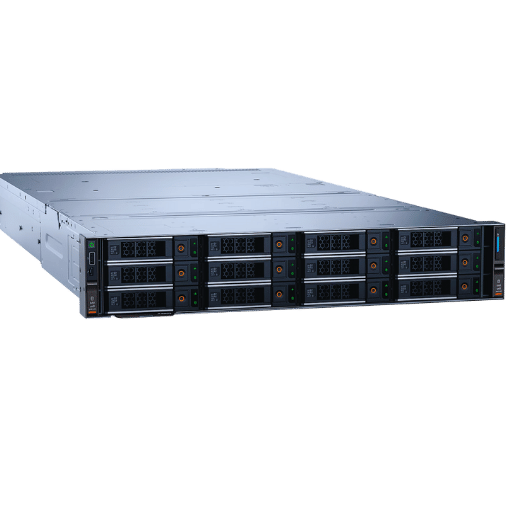
To ensure efficiency in processing and memory, observe the following recommendations:
While evaluating the drive bays and storage, several critical factors are to be considered to ensure that the specific requirements for performance tuning and workload balancing are met:
By thoroughly analyzing these criteria, intelligent storage systems can be designed that are optimal, dependable, and scalable for present and future workloads.
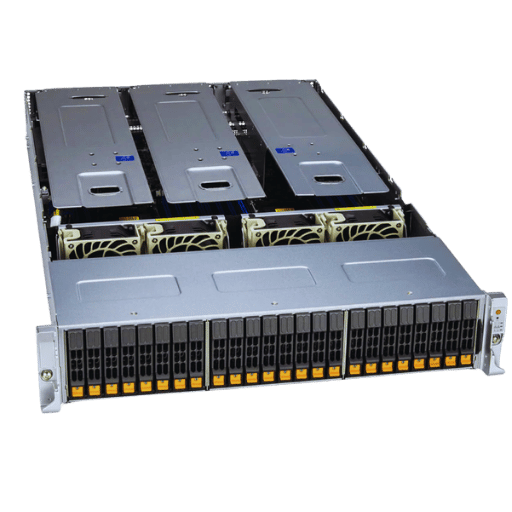
As a result of their direct connection to the PCIe chipset, NVMe drives enable much faster data transfers, which are ideal for high-performance applications like virtualization and databases. Traditional hard disk drives, also called ‘HDDs,’ offer better value in terms of storage space and cost per terabyte, making them ideal for data backup and archiving. For balanced performance and cost efficiency, many 2U rackmount servers provide flexible configurations that combine NVMe drives with HDDs to meet a diverse set of workload requirements where speed is crucial. NVMe drives meet those needs, while HDDs handle bulk storage.
The hot-swap capability to add and remove drives on the fly while the system is powered on with hot-swap drive bays is a primary operating feature of modern arches and servers. This capability, for instance, enables seamless upgrade and maintenance of windows without command interruption, which is essential in telecommunication and data center infrastructures.
Both hardware and system settings provide the necessary configurations for hot-swap operations. In most cases, the drive backplane comes equipped with a simple level connector that directly connects with the server’s storage controller; thus, no cabling is required. Most modern servers have locks on the bays and LED indicators to prevent bay ejection and give a defined indication of drive status, such as failure, activity, and identification.
SATA, SAS, and NVMe data exchange interfaces allow hot-swapping, especially on RAID configurations of special devices. Due to shifts in the architecture of its PCIe interface, NVMe hot-swap has made notable advancements. Now, its plug-and-play capabilities have reached the levels of traditional SAS and SATA drives. Moreover, research indicates that hot-swap storage solutions can decrease critical system downtime by up to 30%, optimizing system performance.
Considering this advancement, IT administrators should check the compatibility of the drives, drive bays, and operating systems for smooth interaction within the system. Hot-swap systems’ overall effectiveness and reliability are highly dependent on proper device management software and firmware.
The merging of networking functions into the System on Chip (SoC) and the incorporation of additional units, or expansion cards, plays a pivotal role in lifting performance levels, especially in servers and high-performance computing HPC systems. Network Interface Cards or NICs serve as links in the network by enabling the transfer of data at high speeds, that is, 10Gbps or even up to 100Gbps in some cases. Other cards, like PCIe-based expansion cards, provide additional capabilities like more advanced graphics processing, enhanced storage interfaces, or specialized computation.
When purchasing network or expansion cards, one of the most critical aspects is compatibility with the motherboard, the existing PCIe lanes, and the bandwidth required. For instance, a PCIe Gen 4 slot can provide an astonishing 16 GT/s throughput per lane, and compared to its predecessor, PCIe Gen 3, which was capped at 8 GT/s per lane, there’s a staggering increase in data throughput. Industry analysts also suggest purchasing next-generation expansion cards is estimated to boost overall system workloads and throughput efficiency by almost 40 percent.
Installing drivers first and then performing firmware upgrades is always good practice. Having NICs installed in the systems can ensure reliability, while dual NICs can improve benchmarks across the board, lessening the chances of systems going offline. Other factors that should be considered include thermal outputs, as network engineer peripherals are known to run very hot – a considerable amount of cooling is required for the system to remain stable.
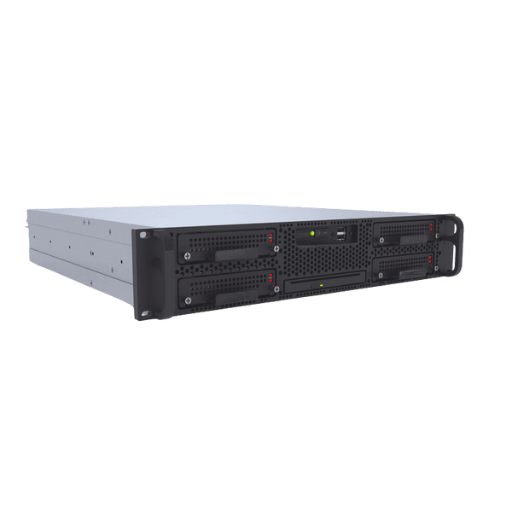
Supermicro 2U systems offer high performance, scalability, and energy efficiency, which is ideal for businesses. These systems support high-density computing with multiple processors and large memory capacities to handle demanding workloads. Their modular design allows for flexible upgrades and easy maintenance, and they are adaptable in the long term. Supermicro 2U systems deliver reliable performance and reduce operational costs with advanced cooling technologies and efficient power usage. Their suitability with various enterprise applications further enhances the systems as a versatile and dependable business choice.
For effective execution of Supermicro designs at scale, first, evaluate your industry’s critical workloads and growth expectations. Select scalable modular Supermicro hardware, offering the potential for additional CPUs, memory, or storage. Confirm the infrastructure is designed for integration with legacy systems and is compatible with cloud and virtualization environments for future expansion. Optimize performance and monitor system health using Supermicro management features IPMI and Supermicro Server Manager. Finally, cooling and power management schemes that enhance system performance and efficiency should be deployed within expanding system resources.
As with any server customization with Supermicro, it is helpful to understand your workloads first, especially if you need GPU acceleration. Choose CPUs with higher core counts and more incredible clock speeds for high-performance computing. Memory-intensive tasks could also benefit from maximum RAM configuration. Finely tailor your storage to usage; use NVMe drives for speed-critical applications and larger SATA drives for data archiving.
You may wish to add more NICs for higher bandwidth or redundancy. Remember to verify that your operating system and drivers will work with the rest of the setup. Above all, balance customization with scalability, ensuring the setup has room for expansion without extensive rework.
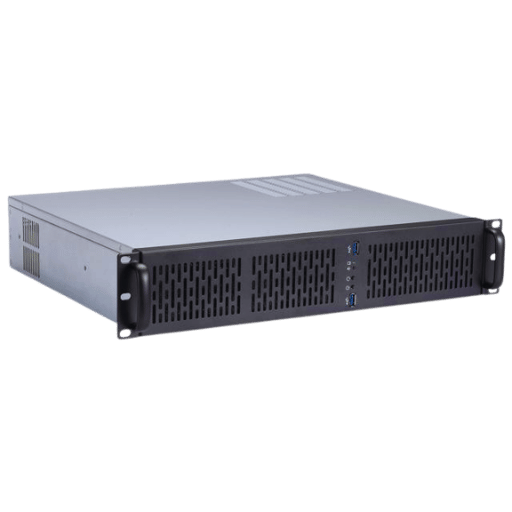
Through a combination of advanced technological performance, efficiency, management, and scalability, Dell 2U rack servers are engineered to tackle high-density workload challenges. With the ability to support dual processors, high memory, and even greater storage, these servers can deal with resource-demanding applications. These systems are superseded with cooling systems and power supplies to provide maximum reliability and minimum system downtime. Moreover, Dell 2U servers cater to changing business needs with their adaptable expansion options. Simplified monitoring and maintenance through integrated management tools, GPU acceleration, and diverse IT ecosystems greatly enhance usability within sophisticated REP environments.
Dell Technologies optimizes the use of IT resources with practical solutions that enhance management efficiency. Their systems are built with scalability, allowing businesses to rapidly adapt to changing GPU requirements without compromising reliability. Automated monitoring, integrated management systems, cutting-edge hardware designs, and modular architectures reduce operational complexity, improving deployment speed and resource allocation. These tools maintain alignment with the organizational objectives while ensuring a performance-centric IT environment.
When selecting a Dell server tailored to my company’s requirements, I analyze what my workloads include, such as data processing, storage, or virtualization. I also consider performance and scalability, balancing growth potential and current demand. Moreover, workload classification helps capture efficiency, management, power, and security to guarantee that all operational and budgetary goals, especially concerning GPU inclusion, are met. The various models offered by Dell can be configured to effectively support my business goals, such as GPU integration optimization, making the range appropriate for my needs.
A: A 2U server is classified as a two-unit rack with a height of approximately 3.5 inches within a server rack. It enables efficient performance while balancing computing power and space, making it ideal for greater density and more efficient use conditions than 4U servers or tower form units.
A: 2U short-depth servers are suitable for space-limited environments as they are less deep than standard rack servers. These short-depth units can achieve maximum performance and flexibility while having a minimal physical footprint, making them ideal for height-constrained situations.
A: Intel and AMD offer high-performance capabilities for 2U servers, with both offering powerful options. Intel’s Xeon Scalable processors and AMD’s EPYC processors enable performance customization based on workload requirements like HPC, database applications, or cloud computing—all of which need powerful computing options.
A: A dual-processor configuration provides additional computing power and improves scalability to enhance system performance for intensive applications and workloads. This configuration is advantageous in enterprise environments where businesses need robust processing and optimal resource management.
A: PCIe or Peripheral Component Interconnect Express slots are crucial for expanding a 2U server’s capabilities. These slots can be used to mount GPUs, storage controllers, and other peripherals, which can be customized to serve various applications, such as high-performance computing or advanced storage servers.
A: Custom server configurations enable businesses to modify the 2U servers to suit particular hardware requirements and specific workloads. This type of adaptation can be a small business server, a dedicated storage server, or a high-density compute environment, resulting in optimal performance.
A: It is ideal for HPC and cloud computing because of the 2U server’s spatial utilization and processing capability. Its high 2U design supports cloud infrastructure and provides extreme computing power for demanding workload requirements.
A: A 2U server can accommodate high-density storage configurations since it offers sufficient mounting space for drives and other storage devices. This is beneficial in environments that require high data storage volumes and swift retrieval, such as databases and enterprise applications.
A: A 2U server has to be customized for an application with the right processing capabilities, memory allocation, storage volume, PCIe slots, expansion capabilities, and the ideal balance between performance and physical footprint. Meeting these conditions will guarantee the application performance expectations are fully met.
A: From conventional business servers to high-performance specialized servers, Dell USA has a diverse portfolio of 2U servers that support various enterprise servers. Dell offers a myriad of business solutions, including different hardware configurations, ensuring that organizations have servers optimized for their workloads and resource efficiency.
An Experimental Study of Two-Phase Immersion Cooling for a PC’s CPU and a 2U Server at Overclocked Frequencies
2. Modeling and Thermal Simulation of 2U-Rack Servers Applying Computational Fluid Dynamics Techniques
3. Evaluation of Hot Air Recirculation Computational in a Server Rack